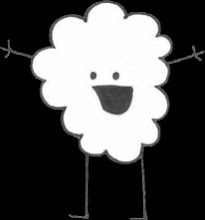(Originally posted on 24 August 2007 at The Screengrab. Reprinted with permission.)
Buster Keaton is, without hesitation, my favorite filmmaker. While his films were hilarious, laughter was only part of Keaton’s brilliance. This being my twenty-fifth Movie Moment column, it is as good a time as any to write about the man. Rather than narrowing his career down to a single scene, I decided instead to spotlight several, each illuminating a facet of his genius.
Inventiveness
Keaton was peerless at engineering gags, often having his characters improvise them onscreen. In The ‘High Sign’ (1921), Keaton works in a shooting gallery but isn’t much of a marksman. So using a rope, a dog, a piece of meat, a wooden pedal and the shooting gallery’s bell, he fools his boss into thinking he’s a crack shot. Half the fun of Keaton’s inventions was seeing them go haywire, as when the dog sees a cat and rings the bell over and over while Buster scrambles to keep up.
Athleticism
In addition to being a comic genius, Buster Keaton was a formidable athlete. Keaton would often double for his costars — even the female ones — on the more difficult stunts but there were other instances in which he needed some help. In Neighbors (1920) is a scene when three men, stacked on each others’ shoulders with Keaton on top, walk back and forth across a courtyard three times in a single shot. Hard to tell if the men under Keaton switched between crossings but little matter — it’s quite a sight.
Random Hilarity
Most comedies live and die by their big set pieces, but it takes a special talent to treat the downtime between them as something more than expository dead air. This is where Keaton’s knack for off-the-cuff jokes shines through. In The Scarecrow (1920), his leading lady fantasizes about being a ballerina while Buster gets chased by both a dog and her father. She kicks and twirls, oblivious to the action around her, and keeps it up through most of the film. As a title card reads, “She belonged to the dancer’s union and couldn’t stop until the whistle blew.”
Generosity
Many silent clowns were reluctant to cede the spotlight, but Keaton granted even bit players their share of choice moments. Consider the scene in Our Hospitality (1923) in which Keaton travels South via train. As the train passes, a little old man picks up some rocks and chucks them at the engineer. The engineer retaliates by throwing wood at him. After a few seconds the old man stops, picks up the logs, and walks home with an armload of free firewood. Who would not only make time for this character we never see again but also give him one of the movie’s best bits?
Subscribe to:
Post Comments (Atom)





No comments:
Post a Comment